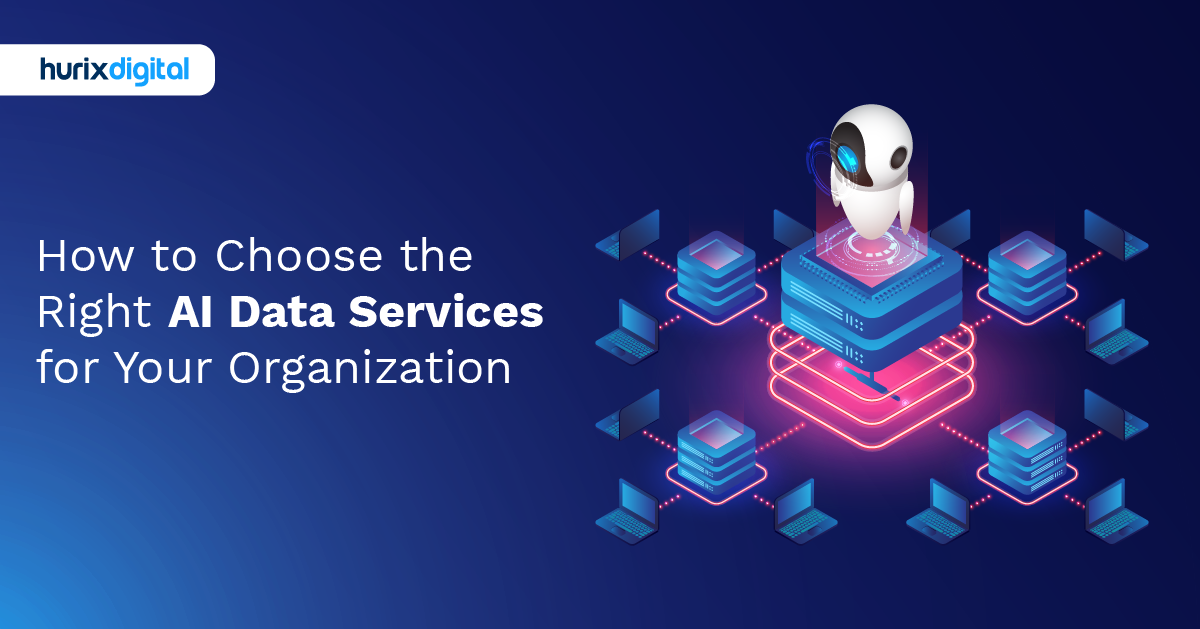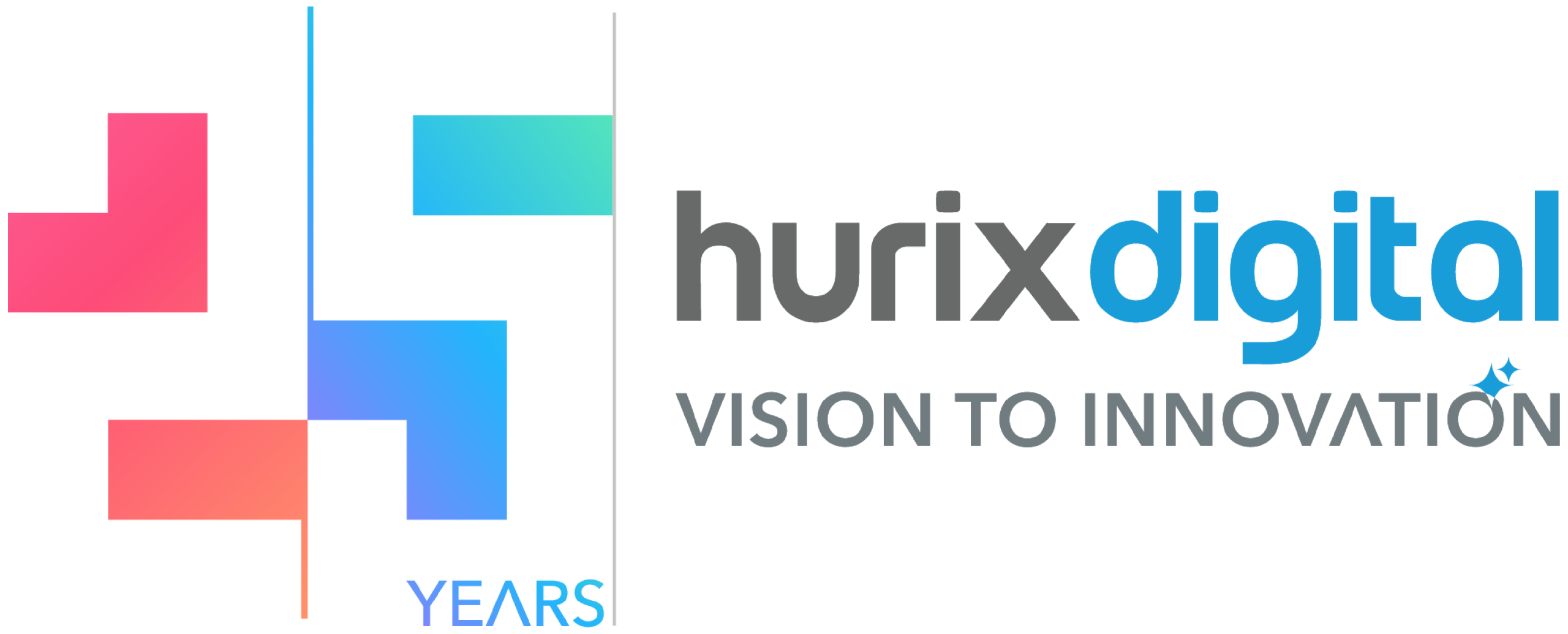
How to Choose the Right AI Data Services for Your Organization
When artificial intelligence (AI) promises transformation, many senior leaders initially focus on algorithms and shiny new models. But for anyone who’s actually embedded AI into a large organization, the real challenge lies beneath the code. It’s all about the data. You often find yourself staring at a mountain of information, wondering, “Can we actually trust this stuff? Is it ready for prime time?”
This unspoken fear of data quality is what keeps the leaders up at night. They know that their AI models can only be as good as the data they get, but putting in place good governance frameworks is like trying to get cats to move from one department to another.
It is an enormous challenge to scale AI data infrastructure to serve enterprise needs and integrate these new data services with traditional activities. And, then of course, there is the tightrope of maintaining the balance between the largely cost-related expenses and the actual business value, or the rather silent race to find and keep those brilliant minds capable of maneuvering in this domain. Above and beyond the operational, there is the ethical labyrinth of controlling prejudice and privacy, not to mention trying to protect all of it against the ever-changing nature of threats. These issues become underlying strategic obstacles that require mature leadership skills and experience, particularly for senior leaders.
Table of Contents:
- How to Ensure High-Quality Data for AI Model Accuracy?
- What are Critical Data Governance Frameworks for AI Data Services?
- How to Scale AI Data Infrastructure Efficiently for Enterprise Needs?
- What is the Best Strategy for Integrating AI Data Services Seamlessly?
- How to Balance AI Data Service Costs With Tangible Business Value?
- How to Build and Retain Top AI Data Services Talent?
- What Key Metrics Prove ROI for AI Data Services Investment?
- How to Manage Ethical Implications and Bias in AI Data?
- What Advanced Strategies Secure AI Data Services and Ensure Compliance?
- How to Future-Proof AI Data Strategies Against Evolving Technology?
- Wrapping Up!
How to Ensure High-Quality Data for AI Model Accuracy?
Quantity seldom wins over quality when training AI models. It is a common trap of educational institutions to feed the system anything they can find: quiz grades, attendance, forum comments, and video engagement data. Yet here is what the experienced data scientists understand: rubbish data will result in rubbish forecasts, regardless of how complicated the algorithm.
Think about a university trying to predict student dropout rates. They might have years of data, but if half the records show missing attendance figures or incorrectly logged grades, their AI model becomes a sophisticated guessing machine. One community college discovered its predictive model was wildly inaccurate because international students were coded differently across departments. The registrar used country codes while student services used visa types. Little mistakes, big effects.
To get good data, you have to be completely honest about what you really have. A practical approach involves sampling 100 random records and manually checking them against source documents. Educational organizations typically find error rates between 15-30% on their first audit. Often, these errors occur where human judgment is involved in data entry, such as subjective assessments, free-text fields, and multi-step procedures.
There are three concurrent tasks necessary to establish data quality. The first is to have validation rules on entry points. In the event that the grade must be in 0-100, then the system must not allow anything other than that. Second, create feedback loops that allow end users to flag suspicious data. Teachers notice when a student’s record shows perfect attendance despite being absent for two weeks. Third, schedule regular reconciliation between systems. When the learning management system (LMS) indicates that a student has completed 12 modules, but the assessment system shows 10, an investigation is needed.
What are Critical Data Governance Frameworks for AI Data Services?
Data governance appears to be bureaucratic until a problem occurs. Picture this scenario: A school district implements an AI tutoring system that adapts to each student’s learning pace. After six months, parents discover that the system has been sharing detailed learning profiles with third parties. As a result of unclear ownership of the decision about external data access, this sharing happened without any authorization.
Effective governance starts by answering three questions most organizations skip:
- Who can access what data?
- Who decides when data policies change?
- Who takes responsibility when something breaks?
These questions seem simple until you face a real organization with multiple departments, varying technical literacy, and competing priorities.
A practical governance framework resembles a well-run household. You need clear rules, but also flexibility for unexpected situations. Start with data classification. Attendance records might be “internal use,” while psychological assessments require “restricted access.” This classification drives everything else: storage requirements, access controls, and audit procedures.
The framework should cover five main areas without requiring extensive form completion. Access management decides who can see what based on their job, not their title. Change control makes sure that changes to data structures don’t break AI models that come after them. Quality standards set the limits for the number of acceptable mistakes and how to fix them. To keep student information safe, privacy protection means more than just following the rules. Finally, lifecycle management decides how long to keep data and when to delete or archive it.
How to Scale AI Data Infrastructure Efficiently for Enterprise Needs?
Scaling data infrastructure resembles expanding a house while still living in it. Until you build for the future, you can’t tear everything down and start over. Schools and colleges face a twist on this. Their data doesn’t flow in a steady stream. It often floods in seasonal bursts. The volume spikes hard when new students enrol, finals begin, or papers are due. If the setup isn’t big enough to welcome those surges, it will buckle.
Smart scaling begins with understanding your actual patterns, not industry benchmarks. A medical school’s data patterns differ completely from a K-12 district’s needs. One processes complex clinical simulations for small cohorts; the other handles basic assessments for thousands of students. Generic “best practices” fail because they assume average scenarios that rarely exist.
Cloud services changed the scaling conversation from “how much hardware?” to “which architecture?” The question becomes how to use cloud resources intelligently rather than whether to use them at all. Hybrid approaches often work best for educational institutions. Keep sensitive student records on-premises while leveraging cloud elasticity for computational workloads. This split reduces costs while maintaining control over critical data.
Cost efficiency comes from matching resources to workloads. AI model training requires massive computational power for short periods. Rather than maintaining expensive GPU clusters year-round, institutions can spin up cloud resources during training phases. Daily predictions and queries need consistent but modest resources. This temporal splitting drives smart infrastructure decisions. You need intense resources occasionally, steady resources constantly.
Modern architectures embrace microservices over monoliths. Instead of one giant system handling everything, specialized services manage specific tasks. One service cleanses incoming data, another runs predictions, and a third generates reports. When exam season drives report requests through the roof, you scale that service without touching the others. This modularity provides flexibility while controlling costs.
What is the Best Strategy for Integrating AI Data Services Seamlessly?
Integration projects fail for human reasons, not technical ones. The learning management system (LMS) speaks one language, the student information system another, and the AI platform expects something entirely different. But the real challenge comes from connecting people who own those systems rather than connecting the systems themselves.
Start integration with a map of data flows rather than system diagrams. Where does student data originate? How does it move between systems? Who transforms it along the way? One university discovered its integration failures stemmed from a simple timing issue. The registrar updated enrollment every morning at 6 AM, but the AI system pulled data at 5:30 AM. For months, predictions used yesterday’s enrollment numbers.
Successful integration requires translators between systems. These middleware layers handle the messy reality of data transformation. When the student system stores names as “LASTNAME, FIRSTNAME” but the AI platform expects separate fields, the translator splits them apart. When dates arrive in various formats (some MM/DD/YYYY, others DD-MM-YYYY), the translator standardizes them all. This translation layer seems like overhead until you realize it prevents thousands of manual corrections.
Change management matters more than technical excellence. Teachers comfortable with existing systems resist new platforms that require different workflows. Show them immediate benefits. How AI predictions catch struggling students earlier. How automated reports eliminate hours of manual work. Quick wins build momentum for broader adoption.
How to Balance AI Data Service Costs With Tangible Business Value?
Money conversations around AI get uncomfortable quickly. Vendors promise revolutionary improvements while CFOs see revolutionary expenses. The disconnect happens because both sides speak different languages. Vendors talk about model accuracy and processing speed. Financial officers care about cost per student and budget predictability.
Real ROI calculations start with honest baselines. Before implementing AI services, how much time did advisors spend identifying at-risk students? How many students dropped out despite intervention attempts? How often did course scheduling conflicts delay graduation? Without these baseline metrics, you can’t measure improvement. One technical college spent months building sophisticated AI models before realizing they had no data on their current intervention success rates..
Value appears in unexpected places. Now, reducing dropout rates obviously saves tuition revenue. But secondary benefits often exceed primary goals. Advisors freed from manual analysis spend more time actually advising students. Automated scheduling reduces staff overtime during registration periods. Predictive maintenance on online learning platforms prevents outages during final exams. These operational improvements compound over time.
We recommend that you consider the total cost of ownership across five years, not annual licenses. Initial implementations always cost more than steady-state operations. But some costs grow over time. Data storage, computational resources, and specialized staff all expand as your system matures. Build financial models that account for them.
How to Build and Retain Top AI Data Services Talent?
It is hard to get great AI talent like it is hard to get unicorns; everyone wants them, but it is not much available, and they are costly to acquire. Colleges and universities have to compete with technology powerhouses that provide enviable salaries. The thing is, though, not all people who use AI want to maximize the number of clicks on advertisements or recommend videos. Other people are actually concerned about bettering the educational system.
Building talent starts with realistic expectations. You don’t need an army of PhD data scientists. Most educational AI projects require solid data analysts who understand statistics, coupled with one or two machine learning specialists. Analysts handle daily operations, including data quality, report generation, and basic forecasting. While the specialists tackle complex models and algorithm optimization. This hybrid approach balances expertise with affordability.
Internal development often beats external hiring. That database administrator who’s been maintaining student systems for ten years? They understand your data better than any external hire could. With targeted training in statistical analysis and machine learning basics, they become invaluable team members. One community college sent three IT staff to a six-month data science bootcamp. All three now lead different aspects of their AI initiatives.
Creating meaningful work retains talent better than competitive salaries. Data scientists yearn to solve interesting problems rather than routine reports. Frame educational challenges as research opportunities. Predicting student success mirrors customer churn analysis, except the stakes run much higher. Publishing results at education conferences, contributing to open-source projects, and collaborating with faculty on research papers make positions attractive beyond compensation.
What Key Metrics Prove ROI for AI Data Services Investment?
Measuring AI success requires moving beyond vanity metrics. Model accuracy sounds impressive until you dig deeper. “Our algorithm predicts with 94% precision!” loses its shine when you realize it simply predicts most students will pass because most students actually do pass. Real metrics connect to educational outcomes and operational efficiency.
Student success metrics lead the list but require nuanced interpretation. Retention rates matter, but dig deeper. Did AI interventions keep students enrolled, or did they identify students who would have stayed anyway? Compare intervention groups against historical controls. One university discovered its AI system correctly identified at-risk students, yet interventions produced no improvement whatsoever. The problem lay with ineffective intervention strategies rather than the AI itself.
Operational metrics often show immediate returns. Time saved on routine tasks translates directly to cost savings or improved service. If advisors previously spent 10 hours weekly identifying at-risk students, and AI reduces this to 2 hours, you’ve gained 8 hours for actual student interaction. Multiply across all advisors, and savings become substantial. Document these time savings meticulously. They become your justification for continued investment.
Leading indicators predict future success better than trailing metrics. Monitor data quality trends, user adoption rates, and model performance stability. If data quality degrades or users stop logging in, future outcomes will suffer regardless of current performance. Create dashboards mixing immediate operational metrics with longer-term outcome measures. This combination helps stakeholders understand both current value and future potential.
How to Manage Ethical Implications and Bias in AI Data?
Ethics in educational AI becomes real on Thursday afternoon when the system flags a student as high-risk for dropping out. That flag triggers interventions that might help or might stigmatize. The same algorithm that identifies struggling students could perpetuate systemic inequalities if trained on biased historical data.
Bias creeps in through seemingly neutral variables. Zip codes correlate with income levels. High school names indicate geographic regions with different resources. Even typing patterns might reflect English language proficiency. An AI system trained on successful students from well-funded schools might penalize students from under-resourced backgrounds, mistaking different preparation for inability.
Transparency builds trust but requires translation. Stakeholders deserve explanations for AI decisions, but “the neural network’s third hidden layer activated strongly” means nothing to parents or teachers. Create plain-language explanations for common predictions. “This student was flagged because they missed three assignments and haven’t logged in for a week” makes sense. “The algorithm detected anomalous patterns in engagement metrics” doesn’t.
Ethical frameworks need teeth, not just principles. Establish clear procedures for challenging AI decisions. If a teacher believes the system incorrectly flagged a student, what happens next? Who reviews the case? How quickly must they respond? Create appeal processes that respect both human judgment and system recommendations. Document overrides to identify systematic issues.
What Advanced Strategies Secure AI Data Services and Ensure Compliance?
Security conversations usually start after breaches, but educational institutions can’t afford that luxury. Student data represents not abstract records but real people’s educational journeys, financial information, and often health records.
Modern threats target AI systems specifically. Adversarial attacks manipulate input data to fool algorithms. Imagine someone systematically submitting fake quiz scores to skew predictive models. Model extraction attacks attempt to steal your trained algorithms by observing inputs and outputs. Defense requires layers rather than walls. Perimeter security through firewalls and access controls provides necessary yet insufficient protection. Add encryption for data at rest and in transit. Implement anomaly detection that identifies unusual access patterns. If someone suddenly downloads thousands of student records at 3 AM, systems should alert security teams. But balance security with usability. Excessive restrictions frustrate legitimate users, driving them to create workarounds that introduce new vulnerabilities.
Compliance frameworks multiply faster than anyone can track. Family Educational Rights and Privacy Act (FERPA) governs educational records. Children’s Online Privacy Protection Act (COPPA) protects children under 13. State laws add additional requirements. International students trigger General Data Protection Regulation (GDPR) considerations. Rather than chasing individual regulations, build comprehensive data protection that exceeds most requirements. This approach reduces compliance overhead while providing better protection.
Access control requires granularity without complexity. Role-based permissions work initially, but quickly become unwieldy. A math teacher needs different access than an English teacher, but creating hundreds of micro-roles becomes unmanageable. Attribute-based control provides flexibility by combining multiple factors. Role (teacher) plus context (currently teaching this student) plus purpose (academic assessment) creates precise permissions. This dynamic approach grants appropriate access without permanent permissions.
How to Future-Proof AI Data Strategies Against Evolving Technology?
Planning for an uncertain future sounds contradictory, but educational institutions excel at long-term thinking. Universities operate on decade-long strategic plans while technology changes monthly. The key lies in building flexible foundations rather than betting on specific technologies.
Modularity enables adaptation without revolution. Instead of monolithic systems, create composable services. When better algorithms emerge, swap the prediction module without rebuilding data pipelines. When new data sources become available, add collection modules without disrupting existing flows. This architectural flexibility costs more initially but saves fortunes during inevitable transitions.
Standards matter more than vendors. Proprietary formats lock you into specific platforms. Open standards enable movement between systems. Store data in documented formats. Use standard APIs for integration. When that innovative startup gets acquired and discontinued, standards-based approaches ease migration.
Skill development outweighs technology selection. Tools change; analytical thinking persists. Invest in teaching staff statistical reasoning and data interpretation. These foundational skills transfer across platforms. The analyst who understands correlation versus causation contributes regardless of whether you use Python or R, cloud or on-premise systems.
Continuous learning embedded in organizational culture sustains long-term success. Create regular forums for sharing AI experiences across departments. Celebrate failures that generate learning. That model that completely missed dropout predictions? Understanding why teaches more than dozens of successful implementations. Build communities of practice where staff share techniques, challenges, and victories. External conferences provide exposure to new ideas, but internal knowledge sharing drives practical implementation.
Wrapping Up!
Ten critical challenges, each with layers of complexity. That’s what separates AI aspirations from actual results. Success comes from experienced partners who’ve wrestled with messy data, stubborn systems, and shifting requirements rather than from perfect solutions. Start where you are. Fix data quality issues before they multiply. Build governance that people actually follow. Scale smartly without breaking the bank. Most organizations stumble not because they lack vision, but because they underestimate the foundational work.
At Hurix Digital, we’ve spent more than two decades turning educational data chaos into a competitive advantage. From annotation services that ensure model accuracy to comprehensive AI data solutions that scale with your needs, we handle the heavy lifting while you focus on outcomes.
Ready to transform your data challenges into educational breakthroughs? Let’s connect and map out your path forward.
Summarize with:
ChatGPTGoogle AIClaudePerplexityGrok AI

Vice President – Content Transformation at HurixDigital, based in Chennai. With nearly 20 years in digital content, he leads large-scale transformation and accessibility initiatives. A frequent presenter (e.g., London Book Fair 2025), Gokulnath drives AI-powered publishing solutions and inclusive content strategies for global clients
 Upcoming Masterclass | Build an Army of Brand Evangelists using Training & Development | November 20th, 8:30 AM PDT | 11:30 AM EDT | 10:00 PM IST
Upcoming Masterclass | Build an Army of Brand Evangelists using Training & Development | November 20th, 8:30 AM PDT | 11:30 AM EDT | 10:00 PM IST
